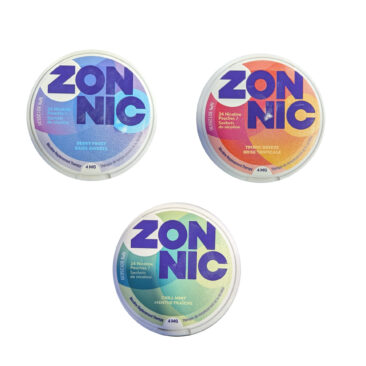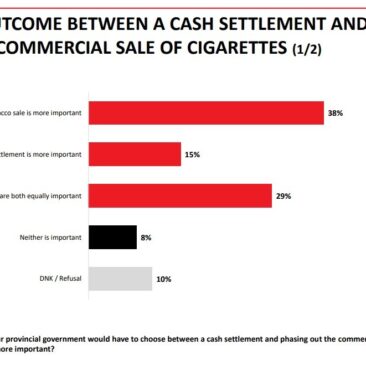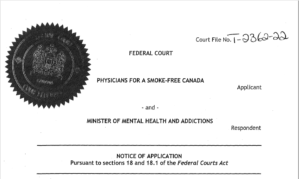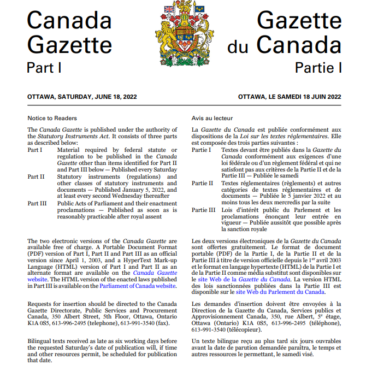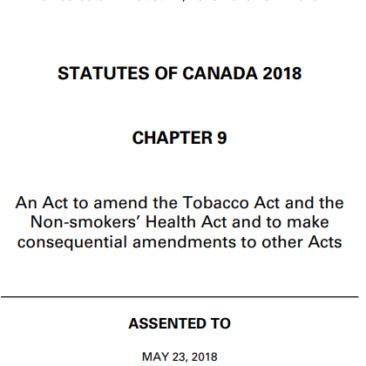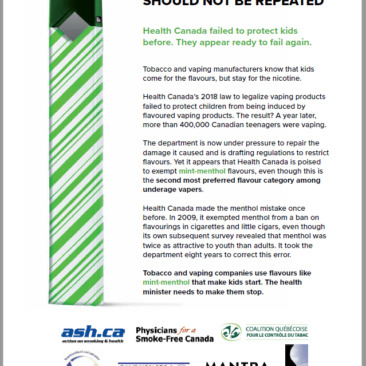Recently the academic journal Tobacco Control published a new study on Finland’s experience with banning flavours in e-cigarettes. In this paper, Eeva Ollila of the Cancer Society of Finland analyzed the legal challenges and defiance to the law by manufacturers and retailers, and identified the need for greater controls at the EU and other levels. See you in court: obstacles to enforcing the ban on electronic cigarette flavours and marketing in Finland.
Canadians reading her research may be forgiven for thinking ‘we should be so lucky’.
Despite the enforcement challenges, Finland has largely succeeded in protecting its young people from e-cigarette uptake. This is shown in the results from its annual school health survey which were reported in Eeva Ollila’s paper. Colour was added for ease of reading.
This data show that, unlike Canada, after Finland legalized e-cigarettes (in 2016), use by early high school students went down (green lines). (Snus – which is illegal in Finland – may be a different issue!).
Finland’s tobacco endgame includes lowering e-cigarette use.
Finland has embedded a tobacco end-game in its national public health strategies and also in its tobacco laws.
- In 2010, Finland’s Tobacco Act was revised to identify a legislative aim as being “to end the use of tobacco products containing compounds that are toxic to humans and create addiction.”
- In 2014, its tobacco control strategy was re-oriented towards “Ending the consumption of tobacco products” with a 2040 goal that no more than 2% of Finns aged 15 to 64 will use tobacco products.
- In 2016, the law was again amended to clarify that this goal included ending the use of e-cigarettes. Finland’s tobacco toal is now interpreted at achieving 5% tobacco or nicotine use by 2030.
Finland puts limits on nicotine, flavours and ingredients:
Under Finland’s 2016 Tobacco Act manufacturers of e-cigarettes must:
- Not use any flavourings in e-cigarette liquids other than tobacco flavour. (s. 24)
- Comply with other aspects of EU Directive (i.e. maximum nicotine concentration of 20 mg/ml) (s. 52)
- Restrict the size of nicotine liquid containers to 10 ml. (s.24)
Finland requires manufacturers to file extensive reports to government.
- Six months before putting a product on the market, manufacturers must provide comprehensive information on the ingredients and their toxicological profile, as well as a description of other manufacturing processes. (s. 26) A modest (150 euro) fee is required for each notification.
- Manufacturers must provide annual reports on sales volume, by brand name and type of product, on preferences of various consumer groups, on market surveys (s. 27)
- Manufacturers must maintain a record of any suspected adverse effects on human health, and provide this to government. (s. 28)
Finland requires manufacturers to provide information to consumers.
Manufacturers must provide health-related information on and in packages.
- In addition to the health warning required by the European Union directive, manufacturers must include a leaflet with “instructions for use and storage (including statement that product is not recommended for use by young people and non-smokers), information on illnesses and other health-related circumstances preventing the use of the product, warnings for specific risk groups, information on the product’s possible adverse effects, information on the addictiveness and toxicity of the product.”
In Finland, tobacco and e-cigarette retailers pay high licensing fees.
Retailers of tobacco and/or nicotine-containing liquids are regulated by Valvira, the National Supervisory Authority for Welfare and Heath. Retailers must:
- Have a retail licence issued by the local authority.
- Submit an annual payment at a rate set by local authorities. The maximum is EUR 500 per point of sale (i.e. for each cash register). The maximum for retailers who sell both tobacco products and nicotine-containing liquids is EUR 1,000.
- Refrain from displaying tobacco or nicotine products in their stores. Tobacco specialty stores may do so, but not if the displays are visible from outside. Retailers are permitted to show purchasers a catalogue of available products and price list, if they have been asked. Standards for this material is set by regulation.
- Have one employee designated as a monitor of the store’s compliance with regulations.
A public register of retail licences and wholesale notices for tobacco and nicotine products is maintained by Valvira. (There are about 7,250 tobacco and nicotine retail licences in Finland (because each point of sale or cashier must be licensed, this means there will be fewer than 7,250 retail outlets). Of these, about 340 sell nicotine liquids. About 2,750 annual visits are made by municipal inspectors to licensed tobacco/e-cigarette retailers.
Finnish health authorities do not promote the use of E-cigarettes as part of a harm-reduction strategy.
The Finnish Institute for Health and Welfare (a government agency) does not promote using e-cigarettes or identify harm reduction as a goal of e-cigarette regulation. The first messages on its web-page on e-cigarettes caution:
- The nicotine in electronic cigarettes is highly addictive and has its own health effects.
- The use of electronic cigarettes impairs the normal functioning of the lungs and reduces the function of the lungs.
- Experimental studies have shown that the use of electronic cigarettes can contribute to the development of cardiovascular changes.
- cigarette liquids and vapors contain a number of harmful substances, such as PAH and VOC (volatile organic compounds). Some of the compounds are the same, carcinogenic compounds, as in tobacco smoke, but generally in smaller amounts.
- Silica and metal particles and drug residues have been found in some e-cigarette liquids.
- Some e-cigarette fluids have caused toxic effects on cells in laboratory tests.
Finland monitors youth and adult tobacco use on an annual basis.
Finland’s public health monitoring includes annual surveys of school health behaviours, and adult smoking behaviours.
Finland imposes a tax on e-cigarettes (at about one-tenth of that on cigarettes).
Finland’s tax on e-cigarettes is EUR 0.30 per ml of liquid. The tax on a typical 2 ml/200 puff pod of nicotine fluid is thus about EUR 0.60 or CAD $0.80. This is equivalent ot the Finnish tax on 2 cigarettes (EUR 0.27 or CAD 0.40 per cigarette).
This information – and references – are available in a downloadable fact sheet.

